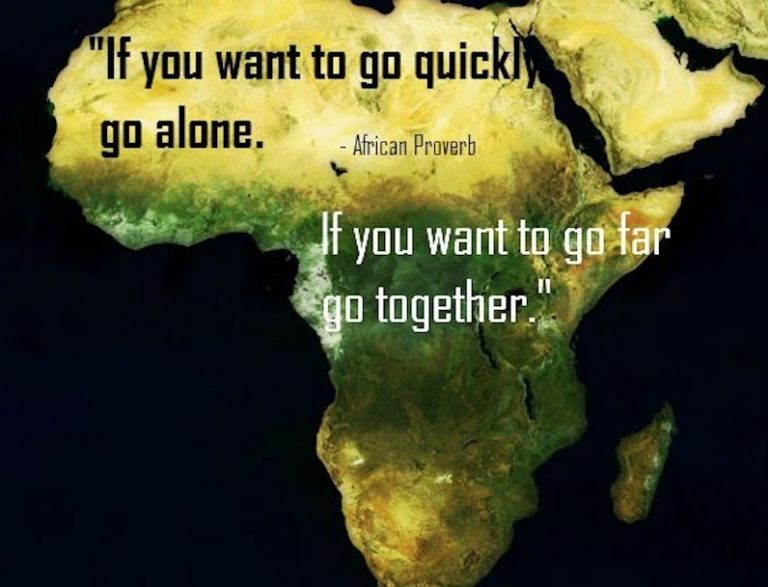Collaboration has a challenging problem: it’s appealing for simple tasks but not for strategic long-term goals. The net result is that we have a market for apps and digital tools that ‘facilitate’ collaboration and implicitly lead to all the good things that collaboration produces, including increased productivity, innovation and better workforce satisfaction. The trouble starts with the little discussed fact that senior managers spend very little, if any, time on integrating collaboration into business strategy. Effectively, once they get past the idea of giving staff better communication tools and an ability to share documents etc, they stop thinking about collaboration. That is where the challenging problem begins: results that collaboration are supposed to deliver never materialise and managers develop suspicious attitudes towards collaboration’s capacity to take their business to another level. It’s a vicious cycle. It is only when major success by a competitor who embraced collaboration becomes visible that managers start to delve more deeply into the nuances of collaboration strategy. As someone who has seen plenty of collaborations work out well, I would say ‘better late ever then never’.
The future of work is creative collaboration
The World Economic Forum (WEF) 2018 Future of Jobs report identified three top skills required for workers to thrive in the fourth industrial revolution. In 2022 the most in demand skills – according businesses surveyed by WEF – will be: 1). Analytical thinking and innovation. 2). Active learning and learning strategies, and 3). Creativity, originality and initiative.
Considering the importance of imagination, innovation, collaboration and the ability to grasp multiple perspectives to each of these, this sets creative collaboration as the foundation of all top three future skills.
Before we look at the five reasons why creative collaboration is the future or work let’s consider the consequences of what the WEF call the fourth industrial revolution, which has been the core theme of its Davos conference since 2017…READ ON
Tips for Pitching Collaboration Technology in the Workplace
Collaboration is simply the sharing of ideas. The technologies offered for collaboration should all be geared around making it easier to share an idea, or helping to clarify that idea. The conversation should begin with communication.
“The idea is to look at how a business uses its workflow,” says Chris Feldman, product manager at NEC Display Solutions. “You want to see how users work and then show them how much more efficient it is to use this technology.”
Once the structure of a particular workflow is understood, you can begin to introduce technology that will aide in that workflow.
For an organization that is constantly sharing and working on files between different employees or departments, a cloud-sharing collaboration display would be a huge benefit. They can dynamically share content, and with some systems they can even have two employees in different locations work in the same document in real time…READ ON
Enterprise Cloud Collaboration Is Broken, But Can You Fix It?
As we move into the age of enterprise hypercompetition, the cloud will play a key role in the collaboration between globally dispersed employees.
But as of now, aging cloud technology is undercutting their ability to collaborate. The longer this continues, the more the cloud is actually stifling business productivity and competitiveness, rather than driving it.
Hypercompetition has reduced the margin of competitive advantage between organizations so that it’s wafer-thin, and firms are racing in real time to exploit any advantage they have. This could include airlines adjusting ticket prices on a minute-by-minute basis, fast-food chains opportunistically discounting prices or gaming companies scrambling to get to market first…READ ON
The power of collaboration

During the launch, the CEO of the Nelson Mandela Foundation, Sello Hatang, announced a new collaboration with the Open Africa Power programme and the launch of the “Nelson Mandela Foundation OAP Prize.” The prize will be granted annually from 2020 onwards by both institutions to the best student of each edition of the programme, based not only on academic merits but also on the student’s social commitments to giving back to the community.
The “Nelson Mandela Foundation OAP Prize” will further highlight this commitment and the first recipient of the distinction will be announced on Mandela Day, celebrated every year on 18 July….READ ON
Why Collaboration Is Key To Improving Maternal and Child Health
Kenya needs more collaborative, systematic and holistic approach for improving the health and nutrition in women, children and adolescent girls; this is the clarion call yielded at the 2nd scientific conference courtesy of the Partnership for Strengthening Maternal, Newborn, Child Health and Nutrition (PSMNCHN) on February 5th and 6th 2020 in Nairobi.
The two-day event held at Safari Park Hotel offered a rich moment of knowledge exchange and skills development amongst key implementing and supporting stakeholders across the country. Funded by the Global Affairs of Canada, the PSMNCHN partnership laid a strong focus on the key priorities identified in 2019 during the first conference “of sharing lessons learned on best practices across RMNCHN projects for effective programming and influencing of policies.”…READ ON
Collaboration tools are more popular than ever, but they have an insidious side
The many benefits of collaboration tools – such as Slack, Trello, Asana and Zoom – are well-documented. The ability to communicate with colleagues instantaneously, to video chat with remote or international co-workers, and to organise large and disparate teams is invaluable to businesses.
The umbrella term covers quite the range of applications, from messaging and task management to conferencing and file sharing. The string connecting each of these technologies is a shared ambition to streamline communication and allow team members to work together effectively.
New tools are entering the market every year and companies are rushing to get their hands on the latest and greatest. According to new research from access management firm Okta, some businesses are using upwards of 200 tools and applications simultaneously. The report also found the average number of applications used by businesses rose 6 percent year-on-year…READ ON
Categories: Uncategorized
